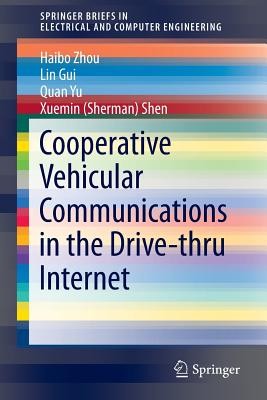
- We will send in 10–14 business days.
- Author: Haibo Zhou
- Publisher: Springer
- ISBN-10: 331920453X
- ISBN-13: 9783319204536
- Format: 15.6 x 23.4 x 0.5 cm, minkšti viršeliai
- Language: English
- SAVE -10% with code: EXTRA
Cooperative Vehicular Communications in the Drive-Thru Internet (e-book) (used book) | bookbook.eu
Reviews
Description
This brief presents a unified analytical framework for the evaluation of drive-thru Internet performance and accordingly proposes an optimal spatial access control management approach. A comprehensive overview and in-depth discussion of the research literature is included. It summarizes the main concepts and methods, and highlights future research directions. The brief also introduces a novel cooperative vehicular communication framework together with a delicate linear cluster formation scheme and low-delay content forwarding approach to provide a flexible and efficient vehicular content distribution in the drive-thru Internet. The presented medium access control and vehicular content distribution related research results in this brief provide useful insights for the design approach of Wi-Fi enabled vehicular communications and it motivates a new line of thinking for the performance enhancements of future vehicular networking. Advanced-level students, researchers and professionals interested in vehicular networks or coordinated network sharing will find Cooperative Vehicular Communications in the Drive-thru Internet a valuable reference.
EXTRA 10 % discount with code: EXTRA
The promotion ends in 23d.02:12:04
The discount code is valid when purchasing from 10 €. Discounts do not stack.
- Author: Haibo Zhou
- Publisher: Springer
- ISBN-10: 331920453X
- ISBN-13: 9783319204536
- Format: 15.6 x 23.4 x 0.5 cm, minkšti viršeliai
- Language: English English
This brief presents a unified analytical framework for the evaluation of drive-thru Internet performance and accordingly proposes an optimal spatial access control management approach. A comprehensive overview and in-depth discussion of the research literature is included. It summarizes the main concepts and methods, and highlights future research directions. The brief also introduces a novel cooperative vehicular communication framework together with a delicate linear cluster formation scheme and low-delay content forwarding approach to provide a flexible and efficient vehicular content distribution in the drive-thru Internet. The presented medium access control and vehicular content distribution related research results in this brief provide useful insights for the design approach of Wi-Fi enabled vehicular communications and it motivates a new line of thinking for the performance enhancements of future vehicular networking. Advanced-level students, researchers and professionals interested in vehicular networks or coordinated network sharing will find Cooperative Vehicular Communications in the Drive-thru Internet a valuable reference.


Reviews